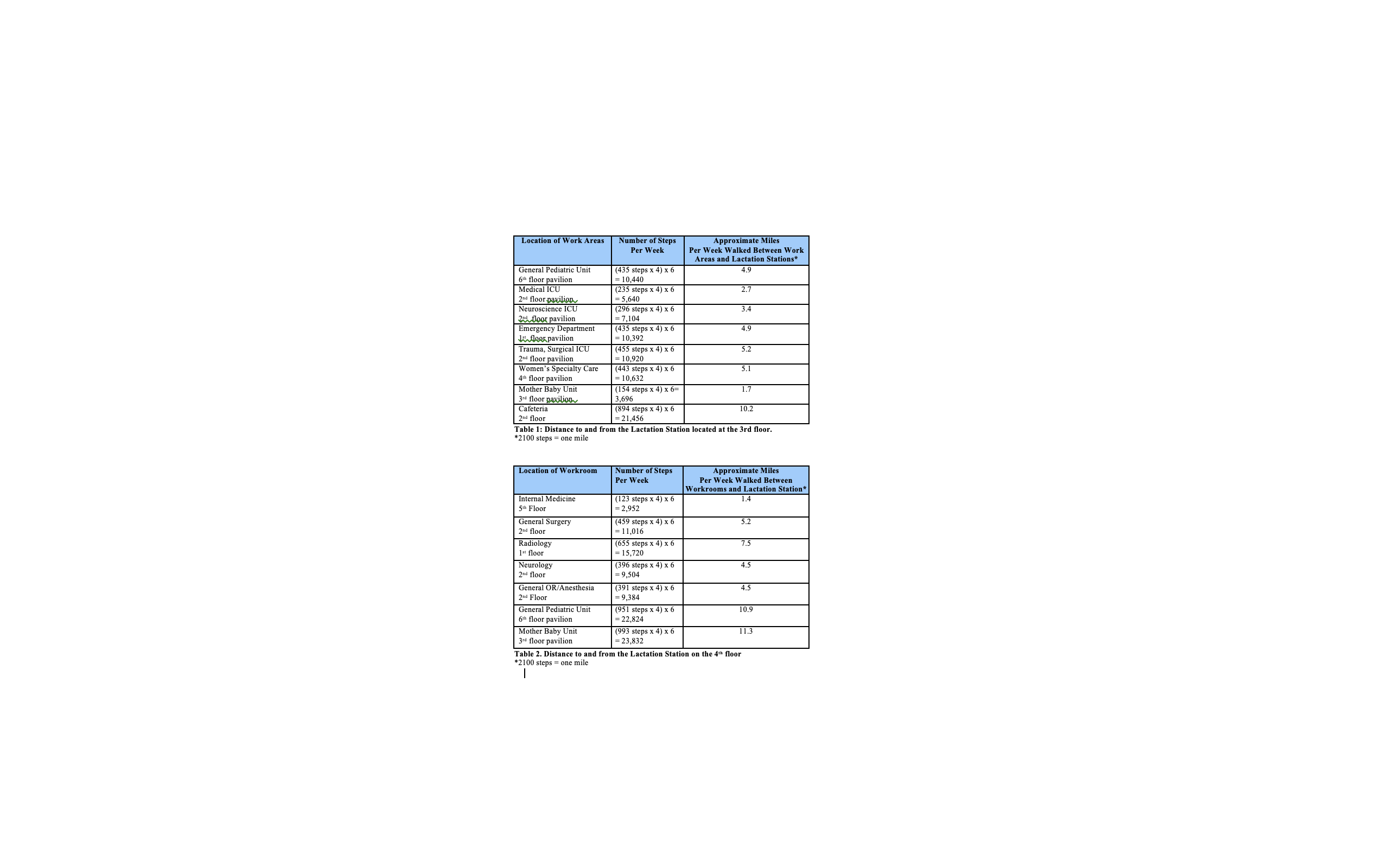Background: Female physicians are a high-risk group for unintentional weaning, with poor access to lactation stations as one of the reported reasons. Less than half of female physicians are breastfeeding at 6 months, and only 29% are exclusively breastfeeding at 6 months. Often female physicians are pumping in their office, while less than 20% are using a lactation station, and up to 20% used empty patient rooms, bathrooms, locker rooms or closets. By law, a lactation station is required to be clean, comfortable and private, and must provide milk and pump storage. Additional, but not required accommodations include computers, breast pumps and a phone line. The objective of this project is to evaluate the accessibility of lactation stations to residents and students while on rotations in the hospital, considering most trainees return to work at a time they are still encouraged to breastfeed.
Methods: Steps were measured from resident work rooms to the nearest and next nearest lactation station in the hospital and back to the work room from different inpatient specialties including internal medicine, pediatrics, general surgery, emergency medicine, obstetrics-gynecology, radiology and neurology. Before 6 months, infants breastfeed every 2-4 hours. Assuming trainees pump eight times per day, four of such times may occur at home and four at work. The number of steps was multiplied by four and then multiplied by six given that most trainees work six days per week.
Results: There are two lactation stations the hospital – one on the 3rd floor of one building and another on the 4th floor of another building. The closest working station to the lactation station in the 3rd floor belongs to the pediatric and ob-gyn departments and requires a trainee to take 3,696 steps in a week (Table 1). In contrast traveling from the trauma surgical ICU takes 10,920 steps. Traveling to and from the Cafeteria takes 21,456 in a week. From the lactation station on the fourth building, the nearest working station is the internal medicine resident room on the same floor. The next closest internal medicine work room to this lactation station is on another floor (2,952 steps) (Table 2). The closest lactation station from the operating room/anesthesia work room is 9,384 steps away. Trainees take 15,720 steps in a week to and from the radiology work room.
Conclusions: A retrospective cohort study evaluated the Integrated Scheduling and Evaluation system of internal medicine residents and categorized evaluations as occurring prior, during or after pregnancy. During the 10-year period 197 female residents were in the program with 117 experiencing pregnancy. The study identified a statistically significant difference in the post-pregnancy peer evaluations between female residents and male residents . Pregnant residents also face a lack of support from colleagues and faculty. These interpersonal challenges, schedule inflexibility, and poor access to lactation stations are barriers for continuation of breastfeeding and harm the training of pregnant residents. Improving accessibility of well-equipped lactation stations can decrease interruption of clinical responsibilities and can promote continuation of breastfeeding. At this large academic center, we found great distances between inpatient team rooms and accessible lactation stations that can pose barriers to breastfeeding.

